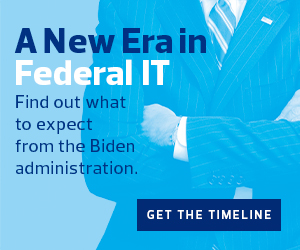How to Help Prepare the Way for New IT Leaders
Career IT staff members who are well-versed in presidential transitions likely have playbooks and past experience they can draw on. They should anticipate that new IT leaders will want to know about the agency’s IT budget and how it is allocated. They will want to know the status of key IT modernization programs and what they might need to know if they are called to testify before Congress.
IT staffers, from the deputy CIO on down, need to make sure that their agencies have clear strategies aligned to defined roadmaps. There needs to be absolute clarity for whoever is in charge; that is the largest factor for success in any kind of transition.
Each agency’s IT strategy and roadmap needs to refer back to the agency’s mission, which may change slightly with new agency leadership. However, as long as the agency’s current IT posture is clear and IT leaders know what is being and why, transitions will be that much easier. Having that knowledge makes responding and adapting to changing administration priorities a smoother process.
EXPLORE: With a new administration, what will change in terms of federal IT policy?
The Key IT Factors to Think Through
The main elements of an IT strategy that should be documented for new IT leaders include the tools that are needed for workplace productivity and how mission work gets done; the IT infrastructure needed to enable those tools; and the cybersecurity that should be wrapped around both. All three should be clearly documented and easily explained to new IT leaders.
Workplace productivity involves all of the hardware and software users need to accomplish their roles and move the agency mission forward. With a remote workforce, that includes cloud-based collaboration, VPN tools, network access control solutions and all of the elements needed to make telework successful.
IT staffers also should be documenting the IT modernization initiatives underway to enable those tools, including cloud migration, data center consolidation and virtualization efforts, application rationalization and modernization, IT asset management, and so on. IT staffers need to be able to provide all of the details a new CIO might ask about such efforts.
If any agency has an IT modernization strategy, career staffers should be able to clarify what that means right now and what it needs to mean moving forward.
Underpinning all of this is cybersecurity. IT leaders should always know what the agency’s risk management process looks like and where cybersecurity efforts are most needed. Given the recent suspected Russian-led cyberattack against the government and private sector entities, and the fact that the fallout from it will be long-lasting, cybersecurity is going to be even more of a top-of-mind concern, as will software supply chain security.
Any new IT leader should know what the top 10 risks are facing the agency, which will inform how to mitigate those risks based on internal and external factors.
Agency IT staffers should view the transition as a time of opportunity to help make their new IT leaders, whoever they are, as successful as possible. After the holiday break, it’s a new year — and it’s time to get to work.
This article is part of FedTech’s CapITal blog series. Please join the discussion on Twitter by using the #FedIT hashtag.












